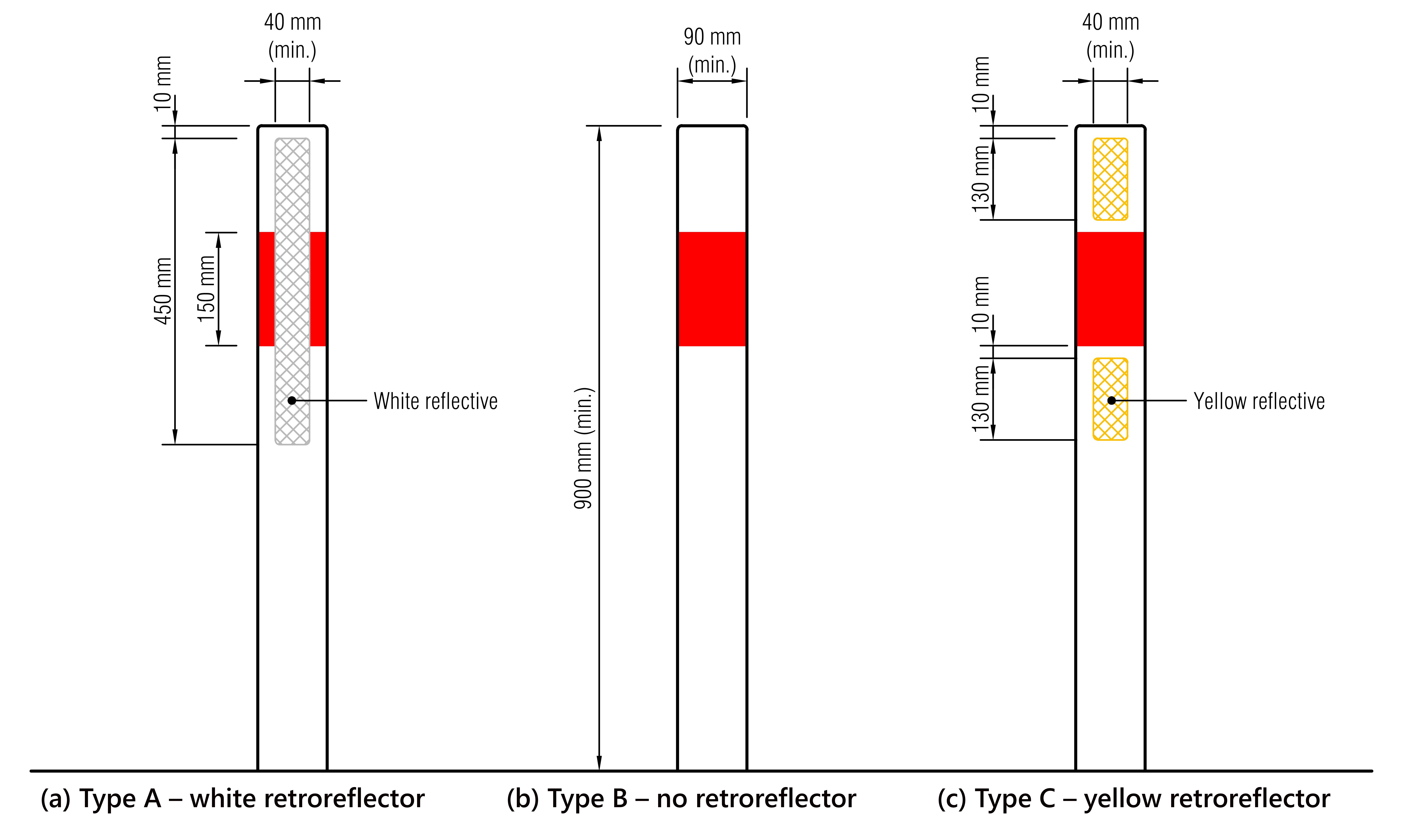This section discusses the use of edge marker posts (EMPs) on straights. For use on curves refer to the treatment of curves.
Edge marker posts (EMPs) are used on rural roads to delineate the alignment of the road ahead, especially horizontal and vertical curves. Edge marker posts are typically fitted with retroreflective devices that form a primary aid for night-time driving. Edge marker posts provide useful guidance for drivers but are not a substitute for standard warning signs.
Edge marker posts should be installed on rural roads with consideration given to sealed versus unsealed and varying volumes as recommended in Table 2‑25.
Edge marker posts:
Edge marker post retroreflective strips on the left-hand side of the road must be white; and on the right-hand side of the road must be yellow.
Refer to the Specification M14: edge marker posts for material, assembly, and dimension specifications for edge marker posts.
Specification M14: edge marker posts
Retroreflective strips must only be attached to properly prepared posts. The retroreflective strips should not be attached to poles, fence posts, signposts, trees, abutments or the like, as doing so would destroy the desirable systematic spacing intended. However, post spacing may be adjusted by up to 20% to clear driveways, side roads or other obstructions. For illustrations of edge marker post details refer to Figure 2‑13.
Figure 2‑13: Details of edge marker posts and retroreflective strips
 View larger image [JPG, 3.4 MB]
View larger image [JPG, 3.4 MB]
Edge marker posts should be placed to produce a smooth flowing pattern of delineation that defines the edge of the trafficable portion of the roadway. Posts should be placed at a uniform lateral distance no more than 3m from the edge of the adjacent traffic lane. Where there are no shoulders, a minimum lateral clearance of 1.2m to the edge of the adjacent traffic lane should be provided where practicable.
Edge marker posts should be placed vertically with the top of the post 900mm above the edge of the adjacent traffic lane. This dimension should be increased when markers are attached behind a steel ribbon guardrail such that the full length of the retroreflective strip is clearly visible above it. The recommended requirements for installation of edge marker posts on rural roads and spacings regardless of volume are provided in Table 2‑25. Refer to the edge marker posts for installation of EMPs on curves.
Table 2‑25: Recommended requirements for the installation of edge marker posts on rural roads
|
Road Type |
AADT |
Treatment |
|---|---|---|
|
Unsealed road |
>500 |
Total route |
|
Unsealed road |
>100 |
Isolated sections |
|
Sealed road |
>500 |
Total route |
|
Sealed road |
>100 |
Isolated sections |
Circumstances may exist where the installation of EMPs to a higher standard than described in Table 2‑25 is desirable; these include:
However, the installation of EMPs along the entire route is not normally necessary for roads carrying less than 500vpd.
Table 2‑26: Edge marker post spacing table
| Horizontal alignment | Retroreflector type; refer note 1 |
Spacing (m) | Post location | ||
|---|---|---|---|---|---|
| Left | Right | Straight | Curve | ||
| Straights | A | B | 100 | N/A | Pairs opposite |
Table 2‑26 note:
The general spacing of EMPs on straights is provided in Table 2‑26. Where passing lanes are marked, the spacing of posts adjacent to the merge taper should be 20m.